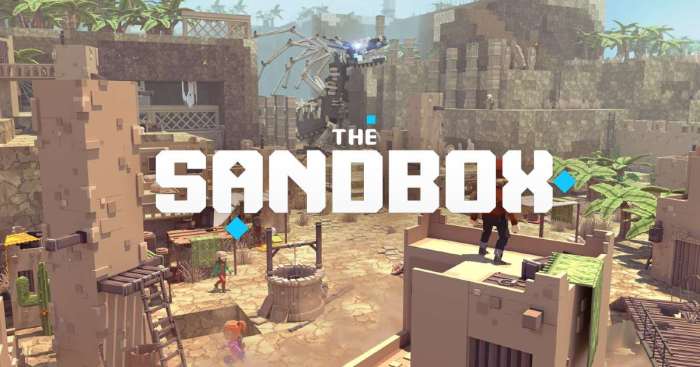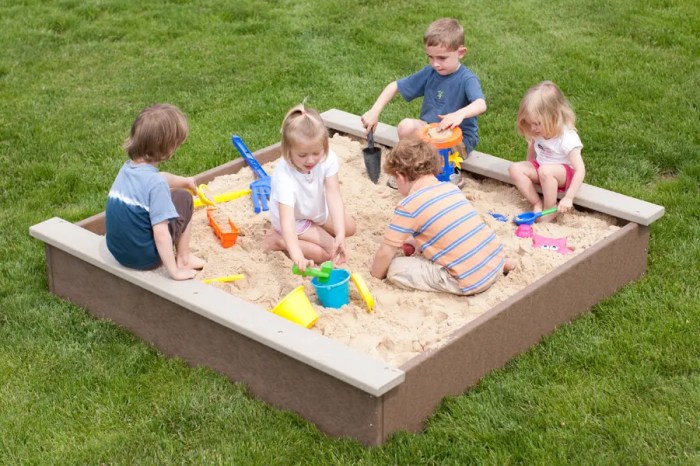
Sandbox games for creativity sets the stage for an enthralling narrative, offering a unique platform where players can express their imagination without boundaries. These games encourage users to create, explore, and problem-solve in dynamic environments, making them a favorite among those who enjoy crafting their own experiences. With titles like Minecraft and Roblox leading the charge, players are not just participants but creators in their own right.
In these virtual playgrounds, the core mechanics invite experimentation and innovation, allowing players to build intricate worlds or simply enjoy the freedom of open-ended gameplay. This genre has proven to be a catalyst for creativity, pushing the limits of traditional gaming and inspiring new forms of artistic expression.
Exploring Sandbox Games

Sandbox games are digital playgrounds where players have the freedom to create, modify, and explore expansive virtual worlds. Unlike traditional games with linear storylines, sandbox games prioritize open-ended gameplay, allowing creativity to flourish. This unique structure encourages players to think outside the box, experiment, and express themselves in various ways. The result is a rich environment where imagination leads the way, making these games a favorite among those who enjoy crafting narratives, building structures, or simply engaging in imaginative play.The core mechanics of sandbox games revolve around freedom of choice, user-generated content, and interactive environments.
Players are often equipped with tools to manipulate resources and elements within the game, creating elaborate constructions or modifying gameplay mechanics. This flexibility not only enhances the gaming experience but also cultivates problem-solving skills as players navigate challenges and experiment with different solutions. Sandbox games encourage creativity through the following mechanics:
- Resource Management: Players gather and utilize resources to create structures or solve problems, sharpening their strategic thinking.
- Building Systems: Games often feature intuitive building tools that allow for complex designs, inviting players to visualize and realize their ideas.
- Collaboration: Many sandbox games support multiplayer modes, fostering teamwork and collaboration as players share ideas and build together.
Popular Sandbox Games that Foster Creativity
Several sandbox games stand out for their ability to inspire creativity among players. Each game brings a unique approach to gameplay and creative expression, appealing to a diverse audience. Here’s a look at some of the most influential titles in the genre:
- Minecraft: This iconic game allows players to build and explore blocky worlds, from simple structures to intricate cities. Its crafting system and endless possibilities have made it a canvas for creativity.
- Roblox: A platform that enables users to create their own games and experiences using unique coding and building tools. Its community-driven approach allows for an array of innovative projects.
- Garry’s Mod: A sandbox game built on the Source engine, it provides players with tools to manipulate objects and create custom game modes, leading to unique player-generated content.
The impact of sandbox games on player creativity and problem-solving skills is significant. Engaging with these games encourages players to explore new ideas and approaches, which can translate into real-world benefits. The following aspects highlight how sandbox games contribute to cognitive development:
Sandbox games are vital in nurturing creativity, as they allow players to experiment freely without the fear of failure.
- Enhanced Creativity: Players learn to think creatively, as they are often tasked with solving complex problems or designing structures from scratch.
- Critical Thinking: The open-ended nature of these games challenges players to consider different perspectives and outcomes, enhancing their analytical skills.
- Community Engagement: Many sandbox games have vibrant communities where players share their creations, leading to collaborative learning and inspiration.
Creative Aspects of Board and Card Games
Board and card games have long served as a canvas for creativity, often blending structured gameplay with elements that allow players to express their imagination. Many of these games inspire storytelling, artistic expression, and open-ended scenarios that promote creative thinking. In exploring the sandbox elements found within these games, we can appreciate how they nurture creativity among players.
Board Games with Sandbox Elements
Several board games incorporate sandbox elements that encourage players to use their creativity in unique ways. These games provide a flexible framework where the storytelling and gameplay can evolve based on player interactions and choices. Notable examples include:
- Dixit: This beautifully illustrated game relies heavily on imagery and imagination. Players create stories and interpretations based on surreal artwork, prompting creativity in both storytelling and gameplay.
- Gloomhaven: While primarily a tactical RPG, Gloomhaven offers players the freedom to craft their narrative through character development and decision-making, fostering a personalized storytelling experience.
Card Games with Open-End Gameplay Scenarios
Card games also present opportunities for creative expression through open-ended gameplay. These games often allow players to adapt rules and narratives based on their behaviors and choices. Examples include:
- Cards Against Humanity: This party game encourages players to fill in the blanks with humorous or outrageous phrases, leading to unpredictable and often hilarious outcomes that stimulate creativity and laughter.
- Uno: While primarily a matching game, Uno’s simple rules allow for creative variations and house rules, enabling players to introduce their twists, enhancing the overall experience.
Inspiration for Storytelling and Imaginative Play
Board and card games serve as powerful tools for inspiring storytelling and imaginative play. These games facilitate narrative development by allowing players to engage in character creation, world-building, and scenario exploration. The collaborative nature of many games encourages players to share their ideas, leading to enriching experiences.
“Creativity is not just about making art; it’s about making meaning.” – Unknown
As players navigate the various scenarios, they often find themselves crafting elaborate stories, thus enhancing their engagement and enjoyment. This storytelling aspect promotes a deeper connection with the game, pushing the boundaries of traditional play into a realm of creative exploration.
Integrating Sandbox Elements in Different Game Genres

The integration of sandbox elements across various gaming genres has sophisticated the way players engage and express creativity. Traditionally, sandbox gameplay is associated with open-world environments, but its principles have found a place in arcade games, online games, and even traditional roleplaying settings. This discussion explores how diverse game genres have embraced sandbox mechanics to foster creative expression and player autonomy.
Sandbox Mechanics in Arcade and Coin-Op Games
Arcade and coin-op games, often defined by their structured levels and point-based systems, can incorporate sandbox elements to enhance player creativity. By implementing mechanics that allow players to interact with the environment in non-linear ways, these games can offer a more personalized experience. For instance, games like
- Angry Birds* exemplify sandbox elements by allowing players to experiment with different strategies to achieve their goals. Players can manipulate the environment to create their own solutions, providing a break from the typical linear progression seen in traditional arcade games. Additionally, titles like
- Minecraft Dungeons* adapt the classic dungeon-crawling format with sandbox-like environments where players can explore and customize their paths.
“The evolution of arcade games towards sandbox mechanics reflects a growing demand for player-driven creativity.”
Integration of Sandbox Features in Online and Roleplaying Games
Online games and roleplaying games (RPGs) offer fertile ground for sandbox elements, allowing players to shape their experiences in dynamic worlds. In MMORPGs likeWorld of Warcraft*, players can create unique characters, build their own narratives, and even influence the game world through community-driven events. This level of player engagement fosters creativity as users can tailor their gameplay experience.Similarly, games likeGarry’s Mod* epitomize sandbox features within online environments, enabling players to manipulate game assets creatively.
Players can create custom maps, scripts, and game modes, showcasing the limitless possibilities available in a sandbox format. The freedom to create and share content enhances community interaction, cultivating a vibrant ecosystem of user-generated content.
Comparison of Traditional Video Games and Sandbox Games
When contrasting traditional video games with sandbox games, it’s evident that sandbox titles significantly enhance creativity and player engagement. Traditional games often feature linear narratives with fixed objectives, limiting the ways players can express themselves. In contrast, sandbox games provide vast open worlds where players can explore, create, and engage on their own terms.The creative aspects of sandbox games are reflected in their gameplay mechanics.
For example:
- Player Agency: Sandbox games allow players to make meaningful choices that can alter the game environment, leading to a deeper sense of investment.
- Community Involvement: Many sandbox games encourage collaboration and competition among players, fostering a robust community that shares ideas and creations.
- Customizability: The ability to customize characters, environments, and gameplay modes empowers players to express their individuality.
This comparison highlights that while traditional video games are often focused on narrative delivery, sandbox games prioritize creative freedom and player engagement, making them a preferred choice for many gamers seeking a more immersive experience.
Last Point
In summary, sandbox games for creativity serve as a vibrant canvas for players to explore their imaginative ideas while enhancing their problem-solving abilities. By blending traditional gameplay elements with the freedom to create, these games not only entertain but also educate, empowering individuals to think outside the box. As we move forward, the potential for innovation within this genre remains limitless, promising even more exciting developments for creators everywhere.
Common Queries
What are sandbox games?
Sandbox games are video games that provide an open-world environment where players can interact freely, create structures, and engage in various activities without a fixed objective.
How do sandbox games enhance creativity?
They allow players to express themselves through building, designing, and crafting, fostering innovative thinking and problem-solving skills.
Can board games also be considered sandbox?
Yes, some board games incorporate sandbox elements that promote creative storytelling and open-ended gameplay, like Dixit.
Are there any educational benefits to playing sandbox games?
Absolutely! These games can improve critical thinking, collaboration, and even technical skills, making them valuable tools for learning.
Can sandbox elements be found in non-digital games?
Yes, various tabletop games and card games incorporate sandbox-like mechanics that encourage creative play and storytelling.





